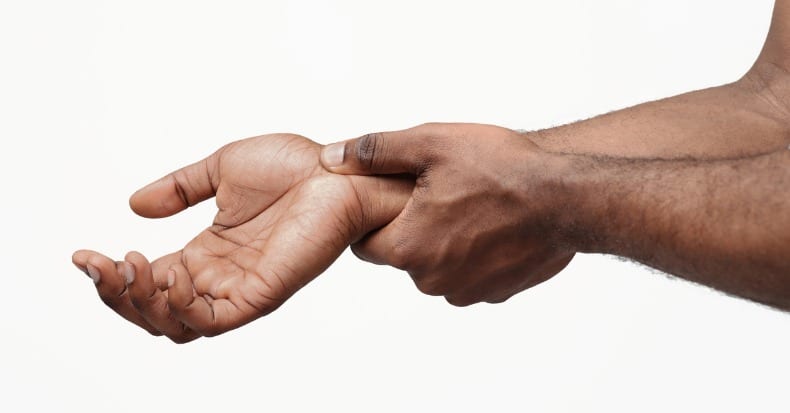While many people may consider carpal tunnel syndrome (CTS) to be the default cause of any pain, numbness, tingling, or weakness in the hand and/or wrist, the condition is more complex. In some cases, a patient with such symptoms may not have CTS at all. So when a patient comes into the office to be evaluated for CTS, how does their doctor of chiropractic determine if CTS is the culprit and how is the condition managed?
To begin, CTS occurs when the median nerve is compressed as it travels through the wrist, which can result in pain, numbness, tingling, and weakness in the thumb, index, middle, and the thumb side of the ring finger. Traditionally, investigators believed the compression of the median nerve itself was responsible for generating these symptoms, but recent studies suggest it may be reduced mobility of the median nerve that’s to blame or it may be a combination of both compression and loss of nerve mobility.
If the patient’s symptoms are localized to the thumb and the first three fingers, as described above, then the median nerve may be affected. However, if symptoms occur on the other side of the ring finger and the pinky, then a different nerve, the ulnar, may be entrapped.
The median nerve itself doesn’t just appear at the wrist. It arises from the neck, passes through the shoulder, and runs down the arm. Compression of the median nerve at any of these locations can result in CTS-like hand and wrist symptoms, even in the absence of symptoms further up the course of the nerve. Additionally, compression can occur in multiple locations, which is described as double- or multi-crush syndrome. This was first reported in 1973 by Upton and McComas, and since then, multiple studies have reported that when a nerve is compressed in more than one location, it becomes hypersensitized and is more susceptible to damage or injury.
When median nerve entrapment is suspected, a doctor of chiropractic will examine the entire length of the nerve to identify all possible issues that should be addressed. If the contributing factors are musculoskeletal in nature, then treatment may include manipulation, mobilization, soft tissue work, modalities, nocturnal splinting, workstation modifications, stretches, and at-home exercises to reduce pressure on and increase the mobility of the median nerve. Changes in hormone levels can also lead to swelling of tissues that surround the median nerve. In which case, co-management with the patient’s physician may be required to achieve an optimal outcome.
The good news is that the non-surgical, multi-modal approach used by doctors of chiropractic is highly effective in patients with CTS, especially if the patient seeks care early in the course of the disease when the symptoms are milder.
Thousands of Doctors of Chiropractic across the United States and Canada have taken "The ChiroTrust Pledge":
“To the best of my ability, I agree to
provide my patients convenient, affordable,
and mainstream Chiropractic care.
I will not use unnecessary long-term
treatment plans and/or therapies.”
To locate a Doctor of Chiropractic who has taken The ChiroTrust Pledge, google "The ChiroTrust Pledge" and the name of a town in quotes.
(example: "ChiroTrust Pledge" "Olympia, WA")
Content Courtesy of Chiro-Trust.org. All Rights Reserved.

